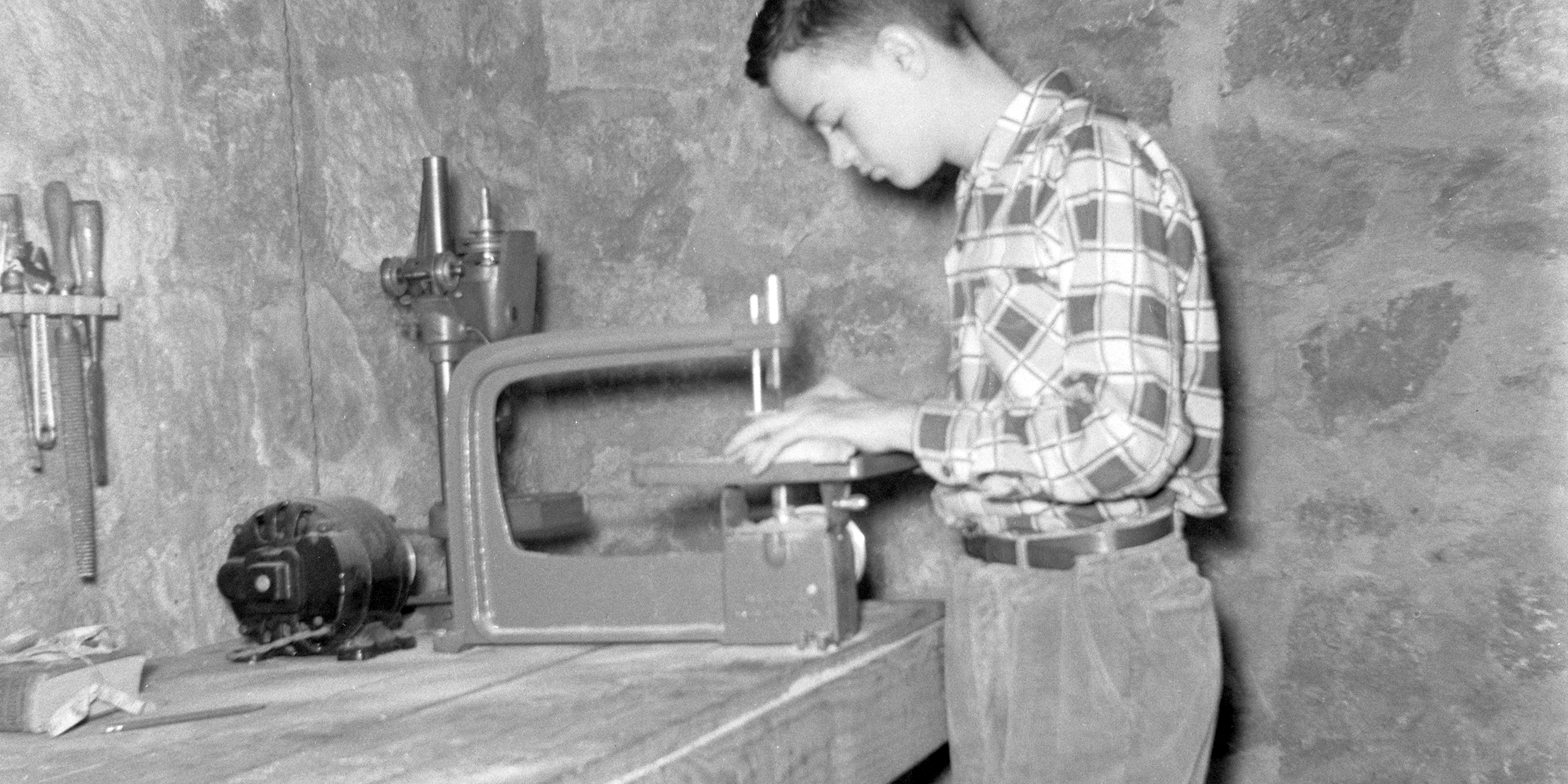Originally published 10 August 2008
Our family home in Chattanooga was built in 1941, and like most other homes in the city was heated by coal. It had a coal bin in the basement, and a big galvanized furnace with cast iron doors and grates and air ducts sprouting from the top like the hair of Medusa. Keeping it going during the winter required a lot of shoveling, and riddling, and hauling ashes. If the darn thing went out, getting it started again was a chore. All this my father bore with about as much grace as you could expect of a young man with a new house and a growing family.
Then, at war’s end, came gas, and a furnace conversion. Perhaps no single technological development of the last century made a greater change in a man’s life than the automatic gas or oil-burning furnace.
But for me — ten years old — the real import of the conversion was the workbench.
My father ripped out the coal bin and used the lumber to build a workbench. A real doozy of a six-footer, with a double-planked top and a backboard for hanging tools and an overhanging shelf under which could be tacked the screwtops of two dozen peanut butter jars containing screws, nails, washers, nuts, and bolts.
Even at that young age I was astute enough to know that the workbench fulfilled an ambition of my engineer father, the ultimate expression of secure, middle-class, suburban life. All that time spent shoveling and riddling and hauling ashes could now be spent fiddling and tinkering and mending. My quintessential memory of my father is of him hunched over the workbench with white sleeves rolled to his elbows, his tie tucked into the buttoned front of his shirt, a dismantled lamp or toaster on the worktop, a soldering iron sizzling in his hand.
Here are some things that were essential to a good workbench:
—It had to be in a basement or garage or other space separate from the house. It was an altar for male liturgies, like the sanctuary of the church a place where women were excluded, an escape from the perplexing entanglements of matrimony.
—On the shelf above the workbench there must be a pile of Popular Mechanics and Popular Science magazines, with their tips for home improvements, Saturday projects, and news of innovations for the tinkerer — multi-tipped screwdrivers, leaf-proof gutters, self-rosining solder, jigs, rigs, and thingamabobs. Here too was a vision of the future that the basement mechanic could aspire to at least in dream: ocean-going hovercraft, folding-wing airplanes for the family garage, radio transmissions with pictures, colonies on the moon.
—At the corner of the workbench there must be a vise. The right vise must be neither too bulky nor too delicate; it was an extension of one’s own hands. My father had a dandy, with shiny steel jaws, that he kept nicely lubricated; you could open or close it with a twirl of your little finger.
—The location of tools on the backboard must be marked by painted silhouettes of the tools — hammer (claw and ball peen), hacksaw, pliers, screwdrivers, brace, rasp, wrenches, etc. — a shadow tool kit.
—Wood chisels were kept wrapped in oiled cloth. A whetstone in its homemade wooden cradle kept the blades shiny and sharp.
—Somewhere nearby there must be a cabinet with a big drawer in which anything could be thrown that didn’t have an assigned place on the workbench. Nothing was discarded. Odd screws, clips, springs, brackets, bits of metal, lengths of wire, broken tools, slightly bent nails. You never knew when you’d need exactly that thing.
—There must always to a project pushed to the back of the bench at an indeterminate state of completion. A pouty wife might lock herself in the bathroom; a sulking husband needed a more manly retreat.
That workbench in our basement was my refuge too as I entered adolescence, a place to learn and hone my masculine skills — mechanical, electrical, plumbing, woodworking — and subdue my hormonal frustrations in a balm of solder splatters and sawdust. Yes, it was a male thing, hard, and bright, and suffused with the smells of burning rosin, wood chips, and oil, guaranteed to hold at bay — for at least an hour or so — the softer, gentler puzzlements that attached themselves to the feminine, never, ever to be understood.
My father’s workbench served me well. I learned how to repair an electric iron, change a washer in a faucet, and stay married to the same woman for fifty years. The surface of a good workbench is akin to the bench in a science lab; it is a place apart, disentangled from the complexities of the emotional life, where one can take apart bits and pieces of the natural world and put them back together again in working order, in the process learning how the world works.



